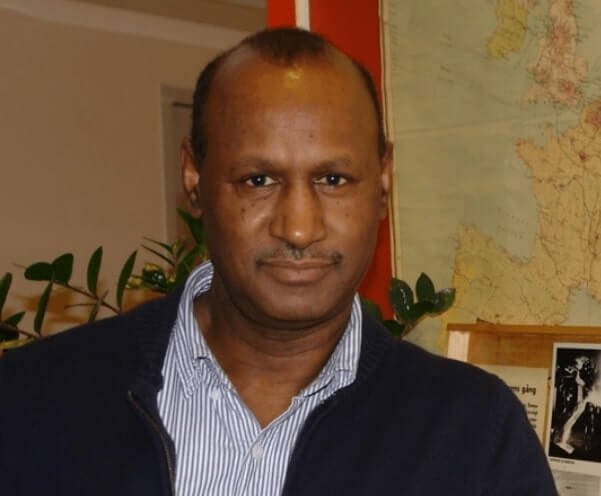By Getachew T. Alemu
For obvious reasons, China has been the major source of external loan. Ethiopia is currently sitting at US$13.7 billion of Chinese loan, largely in the form of commercial loan and export credit.
I am sitting at the waiting area of an airport in one of the regional state capitals, waiting to board my flight to Addis Abeba. This and other airports remain flagship achievements of Ethiopia’s fast-paced economic growth, which, according to the World Bank, averages around 10.1pc for the last 15 years. Ethiopia’s allocation of public investment to economic and social infrastructure has been one of the highest in Africa, with 63pc of the latest budget allocated for education, health and infrastructure development.
Behind this massive infrastructure development effort lays an investment framework deliberately inclined towards the public sector. As such, Ethiopia’s development finance model has largely been relying on local resource mobilization. Tax and non-tax revenue collection has quadrupled in the last 15 years, with average annual growth of 23%.
At the same time, Ethiopia has been running huge fiscal deficit over the years. Although lower than 3 percent as a share of Gross Domestic Product (with the figure remaining debatable), a threshold recommended by the European Central Bank (ECB) and adopted largely by most countries in the world, the absolute size of the annual budget deficit continues to grow. The latest budget, for instance, involves a fiscal deficit of 97 billion Br ( $ 3.4 billion).
As such, deficit financing has been the major fiscal anchor and hence the focus of the state for decades. Two approaches have been crucial in the national deficit financing scheme – direct advance from the Central Bank and borrowing from local institutional creditors. With the overall economic guidance focused on enhancing aggregate demand, both financing schemes have been part of the expansionary fiscal policy witnessed over the years. Cognizant that direct advance from the National Bank of Ethiopia (NBE) has been considered the easiest window, the money supply in the economy has been growing and inflation has been a constant challenge to policymakers.
Whatever was not managed with the deficit financing actions was left to savings from outside in the form of loans. As such, external loans from multinational financial institutions (largely concessional) and commercial loans (from EXIM banks, foreign commercial banks and state-sponsored creditors) have been essential elements of Ethiopia’s development finance matrix. This, however, has caused an incessant debt buildup, with the national debt stock standing around US$27 billion and the cost of repayment constantly growing.
For obvious reasons, China has been the major source of external loan. Ethiopia is currently sitting at US$13.7 billion of Chinese loan, largely in the form of commercial loan and export credit. Yet, China’s recent adjustment to its international financing windows, which largely had to do with modifications to its domestic macro balance, means that the pressure for repayment has been growing with time.
The last decade, relatively speaking, has seen reduction in cost of capital and hence improved access to the international capital market. An indication to this has been the 3.2 times oversubscription of Ethiopia’s Euro Bond debut, with offering amounting to US$2 billion. As such, this general development has given Ethiopia enhanced access to the international capital market. Thus, commercial loans from international banks have been essential parts of the debt buildup.
In contrast, the growth rate of Official Development Assistance (ODA) has been decreasing. Especially financing coming in the form of direct budget support (DBS) has been very low, nearing none. Nonetheless, projectized aid and humanitarian support has been growing. But little could policymakers do over this resources that it remains under a narrow expenditure framework and dedicated objectives.
Overall, this development finance framework of Ethiopia has helped bring rapid economic growth, considerable reduction in poverty, astonishing push in infrastructure development, improved access to social services (mainly education and health) and overall livelihood improvement to millions of Ethiopians.
At the same time, this era has been marked with macro imbalances, widening budget deficit, inflationary pressure, growing inequality and currency depreciation. As a result, Ethiopians have been living with higher cost of living, eroding purchasing power and tighter access to basic consumables, such as edible oil and sugar.
Ethiopia’s ride on this path, guided by its Developmental State policy, has not been smooth. It has been in constant confrontation with international financial institutions, mainly the World Bank (WB) and the International Monetary Fund (IMF), as they see this development finance model a threat to private capital.
But their arguments come from their ideological bearing that favors international capital. History has a lot to say that the Bretton Woods have always been favoring capital market in the West, sometimes at the expense of the livelihood of poor people. Anyone who would like to see this could grab a book or two on the Structural Adjustment Program (SAP) and see the principal premises of it.
This, however, does not mean that Ethiopia’s approach has been seamless. It rather was built on political ambition, bureaucratic can-do spirit, nationalism and distastefor poverty. Unfortunately, this path has made policymakers overlook the long-term economic impacts of their decisions and the resulting negative projectile.
In light of this, one may see a grain of truth in the declaration of Prime Minister Abiy Ahmed (PhD) that much of the problem with Ethiopia’s macro economy has to do with “the development finance model”. But a closer scrutiny to the thesis would show that this conclusion has its own problems.
For one, a poor country like Ethiopia has little option in terms of access to capital. The basic sources of finance for development would be tax resources, local non-tax revenues, domestic borrowing, aid and external loan. Although countries strive to match their development finance demand from local resources, they often fail to do so, as their taxable economic undertakings are limited. Average tax to GDP ratio in Africa stands at 24%, which means, on average, an African country ought to fill 76% of its financing demands from non-local resources.
But the emblem for non-local resources is dependent on factors far away from recipient states. Global politics, changes in interest rate by central banks of large economies, global trade scenarios, inflation rate in trading economies and election cycles would have considerable impact on access to non-local resources.
Even worse, financing from International finance Institutions (IFIs) has a lot to do with the willingness of countries to undertake reforms attached as conditionalities. Those who are not willing to live by the prescriptions would, therefore, be deprived of the access.
Thus, little is there for poor countries to guide the terms of non-local resources. What they would be left to do is to sail in the direction of the wind.
One thing that is often said is that Ethiopia has failed to attract as much foreign direct investment and private capital by using modalities such as Public Private Partnership and Private Equity. But this assertion, too, has its own problem.
On the one hand, PPPs have become popular modalities of development finance only recently. Although developed countries have managed to employ them two decades ago, the learning from the side of both the state as well as the private sector started to mature only recently. From the side of states, the learning entailed higher costs of de-risking PPP investments. And from the private sector perspective, the learning meant limiting investment to mature markets and avoiding frontier markets.
On the other hand, competition in attracting foreign direct investment has been fierce. There is literally no country that is not trying to get its fair share of FDI, from USA to South Sudan. Although Ethiopia has been doing its best in attracting FDI, the demand for lax in regulation from the international private capital has remained unending. And this has to do with issues as varying as liberalizing key sectors to reducing tariff.
Thus, the pressure on policymakers to bring growth and local capital formation, while at the same time embracing as much of international capital as possible, has been considerable. And the choice left to them was really narrow.
Thus, the conclusion that Ethiopia’s macro imbalance boils down to problematic development finance model fails to capture this context.
And there is also this tendency of confusing the principal with the agent, as economists would say. Whatever has to do with the use of the resources obtained through different channels does not necessarily translate into a problem with the sourcing.
For instance, there has been a problem in terms of efficiency of utilization of commercial loans by various SoEs, some guaranteed by the state. But this has little to do with the sourcing, rather the utilization of the resources according to the discipline that the terms of the loans require. Partly, this has to do with the protective environment the SoEs are made to operate, which absolved them from the competitive guidance of the market. And partly, it has to also do with the political commitment they are regulated with. This, therefore, shows that attaching the macro imbalance with the financing model does not give a wholesome picture.
So the big question is: what sort of a shift is Prime Minister Abiy talking about? And what does that entail in terms of policy change?
If one is to go by the lines of the PM and his team of young advisors, the shift is all about embracing more private capital, PPPs, FDI and concessional borrowing. It also involves promoting Direct Budget Support (DBS), rescheduling of debt repayments and adjustment to the structure of some loans. But this happens while the main focus remains generating as much local resources as possible through expanding the tax base, increasing rate of compliance, reducing cost of tax compliance and improving accessibility of the tax system.
So in strict sense of things, there is no change in the anchor of the development finance model. What is being done is adjusting the model to new developments in the local and international capital market.
Locally, the state-driven development path has seen its limits. Over-stretched, both by backlog and new demands, the state craves for alternative finance. However, past mismanagement has worsened its creditworthiness that state-sponsored foreign resources have reduced their interest to give out more resources to it. So has also been the case with commercial-rate capital. This, of course, is not to minimize the role of factors that tightened the purse of crediting countries.
Even then, the demand for resources dwarf the supply. So, at least for the foreseeable future, the Ethiopian economy will remain capital constrained. Yet, this is not peculiar to Ethiopia. It is true to all countries starting from a lower-base, with agriculturally-inclined economy.
An underlying principle to the proclaimed change is that attracting private investment and capital demands considerable investment in the basics, i.e. infrastructure and institution building. If changing the development finance model means withdrawing public investment from the space, it surely will have a negative impact on private capital attraction and GDP growth.
So whether we like it or not, the predominance of public investment in the economy is here to stay. It is needed not only for its importance in driving growth, but also because it is important to attract private investment.
Globally, the depth of private capital market is growing thinner with each day. Interest rate rise by the US Fed, trade war between China and the US, Brexit, changes in ECB leadership, tensions between the US and Iran, and uncertainty around North Korea have all negatively affected capital markets. In non-technical terms, this means accessing capital from the international market has become increasingly difficult and when it happens, the cost is reflected in the higher interest rate.
Considering this context, then, an intended shift in development finance model means selling key assets, liberalizing key sectors, winning as much FDI over as possible and pushing as many PPPs as possible. Speaking from the perspective of policy-making, this means pushing for liberalization and privatization, coupled with legal, investment environment and institutional reforms.
That is exactly what the administration of Abiy Ahmed is doing. And it has to be clear that the end goal is attracting international private capital.
But international capital is opportunistic in nature. It comes when the risk matrix favors more return on investment (RoI) and flies out when RoI is disfavored. And it comes for short-term. Hence, its sectoral orientation and horizon of engagement is adjusted for that. This means it often avoids investment in productive sectors.
Private capital also comes with huge policy and political lobbying power. Thus, it often distorts the political balance.
If one is to go by the international experience, then, the latest inclination of the government towards private capital will risk monetization of politics and hence distortion of the policy-making process.
What makes this shift in development finance all the more challenging is that attracting private investment takes time. It requires lots of work in the form of promotion, convincing investors and negotiating deals. So it is highly unlikely that it will fill the gap that will be created by the withdrawal of public investment.
A better option for Abiy Ahmed and his compatriots would, therefore, be creating a flexible and inclusive development finance framework. And it would help if this framework is designed in a way that is adaptable to local and international realities. It also has to be inclusive of all possible sources of finance, from tax revenues to PPPs. Nonetheless, the framework has to have a means to ensure balance amongst the different elements
An old disruptive bias could not be solved by bringing new disruptive bias. AS
Editor’s Note: Getachew T. Alemu is an investment and development consultant with over 15 years of experience in public and private sectors. He can be contacted at getupfront@gmail.com.















